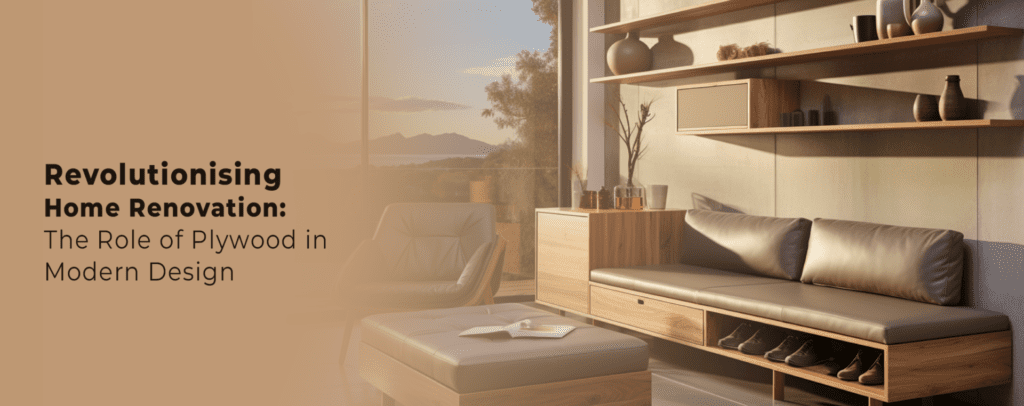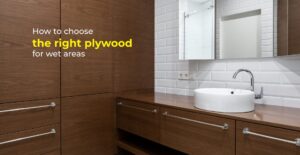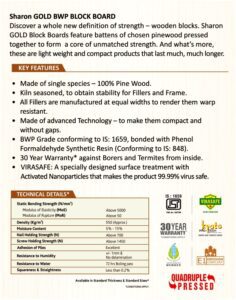

Plywood’s origins date back to ancient Egypt and its characteristics belie its contemporary significance. The material’s enduring utility and versatility have allowed it to transcend traditional roles and emerge as a favoured choice in innovative design projects around the world. This write-up dives into the pivotal role of plywood in modern design, showcasing its adaptability, aesthetic appeal and sustainability.
The essence of plywood lies in its manufacturing: layers of wood veneer are glued together, with the grain of each layer perpendicular to the adjacent layer. The cross-graining process boosts the strength, reduces expansion and shrinkage, and allows for larger sizes than usually solid wood. These characteristics have made plywood an all-important component of furniture, architectural fixtures and even transportation parts.
The Eames Lounge Chair is a quintessential example of plywood’s impact on modern furniture design. It was designed by Charles and Ray Eames and was introduced in 1956. This iconic piece combined plywood’s flexibility with innovative moulding techniques to create a brand-new aesthetic and comfortable chair.
With elegant curves and ergonomic design, the Eames Chair challenged traditional furniture and positioned plywood as not just a utility material but also as something that carries luxury and style. The chair symbolised the potential of plywood to combine form and functionality harmoniously.
Plywood has made significant inroads into modern architecture, as exemplified by the Finnish Pavilion at the New York World’s Fair in 1939. Designed by one of the pioneers of modernist architecture Alvar Aalto, the pavilion showed the unique use of plywood in constructing undulating walls and ceilings. Aalto’s design also displayed plywood’s capacity for creating complex, organic shapes. The structure not only represented Finnish design ingenuity, but also underscored the relevance of plywood in flexible/dynamic spaces.
Would you believe it if we told you plywood’s application extends to transportation design? It’s true – the De Havilland Mosquito is a British aircraft from World War 2, and the machine used plywood extensively in its construction. It’s called the “Wooden Wonder” and it was faster and lighter than its all-metal counterparts. The Mosquito’s design showcased plywood’s strength and lightweightness, proving its efficacy in high-performance applications and influencing future designs in transportation.
In modern design, plywood’s appeal is not constrained to its physical properties. Its sustainability aspect, as a renewable resource, aligns well with contemporary design philosophies that emphasize environmental responsibility. The manufacturing of plywood can make efficient use of timber by using thinner slices of wood, reducing waste and promoting sustainable forestry.
As modern design becomes moderner, plywood is sure to witness a lot of evolution. With the advances in manufacturing technologies, such as digital fabrication, 3D printing and CNC routing, plywood is touted to have expanded applications and more intricate designs.
To conclude, plywood’s journey from a simple construction material to a staple of modern design shows its versatility, strength and beauty. Through the discussed examples, it’s quite clear that innovation often emerges from the most unassuming sources. As we embrace the challenges and opportunities of contemporary interior/exterior design, plywood remains a prominent player – and a testament to the everlasting relationship between materiality and creativity.










Users understand that SHARONPLY is committed to protecting the User’s privacy and shall take all efforts to protect any personal data provided to the Website by reasonable security safeguards against such risks as loss or unauthorised use, destruction, modification or disclosure of data, However, in case of any lapse, SHARONPLY shall not be held responsible for any effect or consequences thereof. The Website uses cookies to track usage of the path of the User. Since most web browsers automatically accept cookies, User can edit User’s browser options to block them if User does not want the Website to use cookies to track usage of the path of the User.
SHARONPLY undertakes not to disclose, except as otherwise provided, the personal information provided by the User to any person, unless such action is necessary to: –
By filling up any form on the Website User automatically grants SHARONPLY a royalty-free, perpetual, irrevocable non-exclusive license to use, reproduce, publish, edit, distribute, and publicly display the information given in the form and to sublicense such rights.
Any queries regarding the SHARONPLY’s privacy policy, may be sent to admin@sharonply.com.

